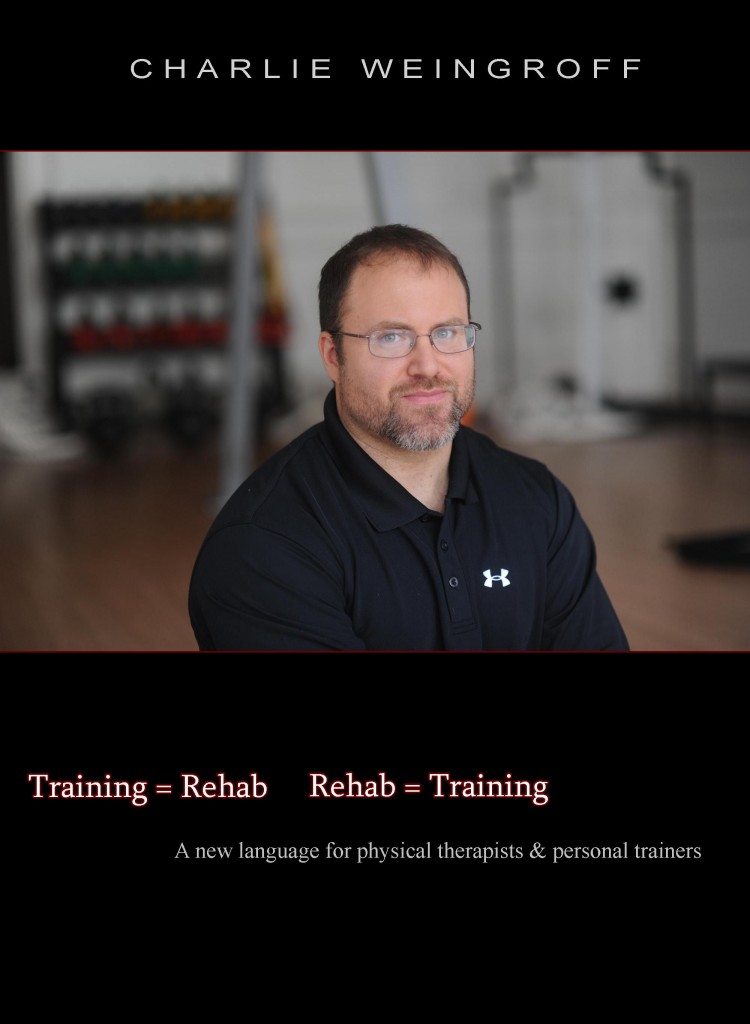Training=Rehab and Rehab=Training series: The Shoulder
1. What do like about treating the shoulder? It’s a challenging joint….
One of the things that is gratifying is in finding and successfully treating a trigger point that is a good portion of the patient's perceptions. I've found that the traditional Travell points are very often a part of the perception of shoulder pain, and much confidence is gained when the patient is able to report, "Yes, that is exactly what I usually feel."
I think at the same time, we don't often pull the plug soon enough and recommend surgery. If the patient is not satisfied with what they are getting, decompression is often a very successful outcome to get past some legitimate bony changes.

2. What kind of shoulder problems do you see most of the time?
I probably see labral tears and chronic rotator cuff strains that manifest through stiff shoulders and associated mechanical and neuromuscular limitations. Much of my workload as a physical therapist is of folks that simply cannot train the way they want to train. I just try to fill those gaps of the training process from a competency perspective while they get after the capacity with their trainer or me in another session.
3. The research says: approximately 35-40% will still have complaints after 1 year the problem occurred. What is the problem in your opinion?
If this is true, it is likely that the patient healed to the point where perceptions were no longer dominant, or they accommodated to the perceptions. However, the threats were likely never truly recovered from. This individual was likely left with a neuromuscular movement profile that simply was not commensurate with the type of activity and stress that he/she engaged in. Rehabilitation should finish with a level of resiliency that when met with the individual's choice of stressors is resisted and set up to continue to adapt and improve.
4. Do you usually start with hands on/manual therapy with most cases?
Not 100% of the time. There are many ways to skin a cat, and if the pain is not in a typical referral pattern, and movement competency is high, then we may go directly into training stability. I'd say this isn't common though where some kind of manual therapy, manipulation, or reflex locomotion sets the stage for motor control and/or capacity training.
5. What are the most common mistakes in shoulder rehab?
1) The assumption that training peri-scapular musculature with concentric patterns is satisfactory or even appropriate at all;
2) Not using heavy enough loads in control and capacity training;
3) Not honoring trigger point referrals;
4) And not honoring regional interdependence of both movement and readiness (mistake in all levels of rehabilitation and training).
6. What kind of problems can you treat after following your course?
We will be looking at the concepts that govern training all body parts, but we'll focus on all conditions across limitations of Pain, Posture, Movement, and Fitness. There will be a healthy departure from particular diagnoses of what "problems you can treat," but rather viewing the body as competent or not and then delivering the stressors for desirable adaptations.
7. For whom is this course designed?
This course is designed for health care providers only with the clinical and institutional allowance to train painful joint processes.
8. What are your thoughts about the HumanMotion Summit?
I think one of the most challenging searches in continuing education is to find a principle-based model to work with all of the great techniques they learn. Many great techniques have suitable evaluation conduits, but they are typically only useful for those techniques. Well, we know that not everything works for everybody. When we use a systematic approach to get end points where many different techniques can work, this is really quite the victory. The HumanMotion Summit offers many great techniques, but the commonalities that many of the speakers represent will put things into a tightly knit perspective where certain methods' roles become more apparent and others lower down the priority list.
Charlie is a Doctor of Physical Therapy, a Certified Athletic Trainer, and a Certified Strength and Conditioning Specialist. Through rehabbing patients, he subscribes to a movement-based approach popularized by the works of Dr. Vladimir Janda, Dr. Shirley Sahrmann, Dr. Stuart McGill, and Gray Cook.
Charlie is presenting his Training=Rehab and Rehab=Training series: The Shoulder course during the HumanMotion Summit. Join us! Read more information and register!
Geplaatst op 26-03-2014 in Inspiratie




